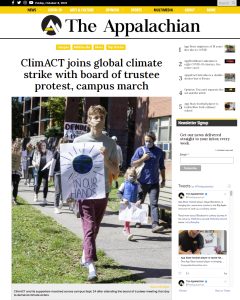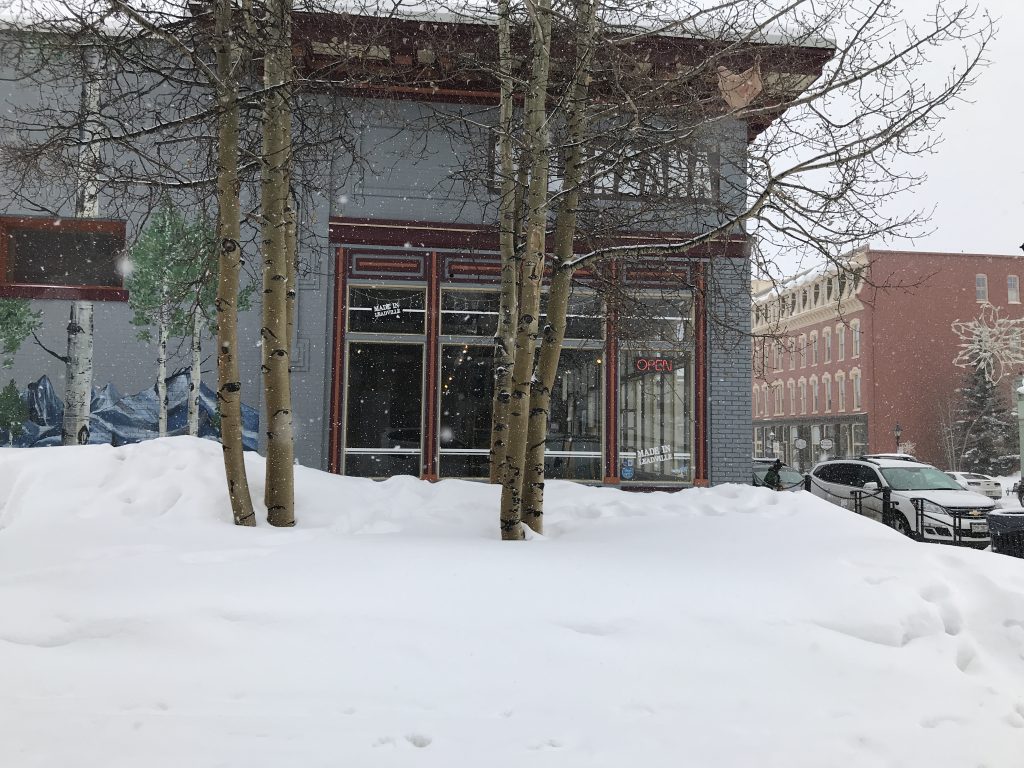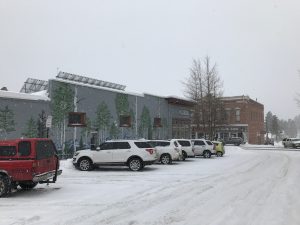 My home town, Boone, NC, is contemplating some zoning changes that will adversely affect rooftop solar. The proposed changes also reveal a mental model about the town’s priorities. There’s a new wave of political activity forming that will tilt closer to or farther away from sustainability and the town appears to be between a rock and a hard place. If there was ever a time to reign in rapacious development it’s now. If there was ever a time to preserve history and our awareness of its importance, it is now. After all we’re in a time when the telling of history is being contested and critical thinking repressed. But that’s not my focus here. I’m concerned about rooftop solar and how good intentions (and not) may become just one more onerous barrier to solar in a place that’s already burdened with regressive policy and a healthy case of greenwash-itis.
My home town, Boone, NC, is contemplating some zoning changes that will adversely affect rooftop solar. The proposed changes also reveal a mental model about the town’s priorities. There’s a new wave of political activity forming that will tilt closer to or farther away from sustainability and the town appears to be between a rock and a hard place. If there was ever a time to reign in rapacious development it’s now. If there was ever a time to preserve history and our awareness of its importance, it is now. After all we’re in a time when the telling of history is being contested and critical thinking repressed. But that’s not my focus here. I’m concerned about rooftop solar and how good intentions (and not) may become just one more onerous barrier to solar in a place that’s already burdened with regressive policy and a healthy case of greenwash-itis.
Boone, including Appalachian State University, which is located here, is a place that likes to call itself green but unfortunately, that’s more facade than action. The historical zoning the town is contemplating is concerned with preserving, or in most cases, resurrecting the facades of old buildings. But despite it’s clean energy talk, this “facade mental model” wants to keep solar panels out of sight, if not out of town. For me the notion of facade is to cover up something beneath, and it seems that what is beneath in this case is ambivalence to local rooftop solar.
A little more on this in a moment but first here’s what I said at the hearing last month:
I’ll speak to a different aspect of the Town’s proposed historic preservation district which I’m supportive of in concept. Here’s my brief statement:
I am speaking as a property owner, as a human being concerned about the climate emergency, and as one who has been involved in the renewable energy field for a long time. I pay property taxes but, living outside the town limit, can’t vote in municipal elections. Our bigger responsibility is for what we euphemistically call “future generations.” We can no longer shift the burden to our children because we still lack the resolve to reign in our community’s greenhouse gas emissions. We’re out of time for that. Now, not the future is a real moment of truth but do leaders listen? ASU students told the Board of Trustees last Friday, they are “tired of not being listened to and tired of empty promises.” What they were really saying is that, “we’re afraid and we see you adults doing nothing.”
In 2007, we envisioned a downtown Boone “Green Light District” and we found that there was interest as well as dead serious barriers. Our first project, which is still in operation, lies within the proposed historic overlay. That project was the town’s first; it didn’t yet know how to permit or inspect solar and New River Light & Power didn’t have a rate for our interconnection. The windows cited in the design standards (packet page 1031) as being historically inaccurate are also on this building.
I want to briefly retell our history with it in order to point out the very real contradictions and dilemmas in historical preservation and accountability to preserve life on earth (and I don’t mean to be polemical). In 2007 it was an unoccupied, dilapidated eye-sore that we restored with our explicit intent captured by its name– The GreenHouse. Those windows in the photograph are repurposed from a dorm demolition at ASU. The timbers are from Potter Lumber, local forests and local jobs. Inside there are 14 SolaTubes for magnificent daylighting, happy occupants and lower electric bills. The reflective glass helps us keep indoor summer temperatures down as well as our power bill. Yes, it’s not 100% historically accurate but its energy footprint is small.
These examples suggest to me that we must have flexibility to incorporate renewable energy and energy efficiency technologies all guided by a reckoning as to why this is utterly non-negotiable, which brings me to my qualified and conditional support for the overlay amendment. There are by my counting 14 references to solar in the standards draft ranging from perfectly reasonable to some I’ve flagged for concern in the draft mark-up. Now isn’t a time to elaborate, so I’ll conclude by simply saying that any regulation that makes an already high and artificial burden on solar even more onerous will not be acceptable. As a friend and colleague told me today– it’s already much easier to get an assault rifle or go to Lowes and buy enough fertilizer to blow up a city block than it is to get a rooftop solar permit in Boone….
By contrast, Boulder, Colorado, where I’ve spent a lot of time, has an over-the-counter solar permitting system. When we started our solar work here in 2007 the guiding question was why is there so little solar in a place like Boone? We know why. So to borrow Boulder’s historical preservation tagline, please “provide sound criteria for alterations, allowing Boone’s historic buildings to adapt and change with the times.” Don’t let the worthwhile intent of historic preservation make the solar bar even higher. We can’t afford it. We’re out of time to dither.
Thank you.

My hats off to ClimACT, the climate action group of students at ASU. In spite of their youth, they’re showing wisdom beyond their years and they’re doing the only thing left for them to do to sound the alarm— demanding that their voices be heard. They are bearing witness to the dissonance between talking and walking the talk here, and they’ve had enough of the greenwash.
New River Light & Power, the university-owned utility, has boasted that it is raising its percentage of green energy from 2% to 15%, but there’s a worm in that apple. First of all, even 15% is hardly a “green” gold medal. It’s not even on the podium. The majority of the generation mix is natural gas, a climate wrecker and its rising cost is going to be punishing. Secondly, it’s importing the hydro from dammed hydro in Tennessee instead of incentivising and developing resilient, local production. If the covid-related supply chain breakdown has taught us anything, it’s to develop local capacities or else. The more brittle and vulnerable we allow those supply lines to become, the more difficult and expensive it becomes to correct. It’ll be more than toilet paper we’ll be running out of because this story hasn’t run its course yet. Think about the vulnerabilities of moving energy supplies great distances in leaky pipelines, tanker trucks on highways, and wires that fall in storms. I like the idea of local power. We ought to develop it and be proud of it instead of being forced to hide it. Otherwise we remain captive to interests that see us only as “ratepayers.”

It’s time we get this right in Boone. Enough talk. I agree with Greta Thunberg who recently faced down world leaders with this— “We can no longer let the people in power decide what hope is. Hope is not passive. Hope is not blah blah blah. Hope is telling the truth. Hope is taking action.”
Lets get solar on rooftops in Boone. Let’s convince our town and local utility to help. Let’s just do it.